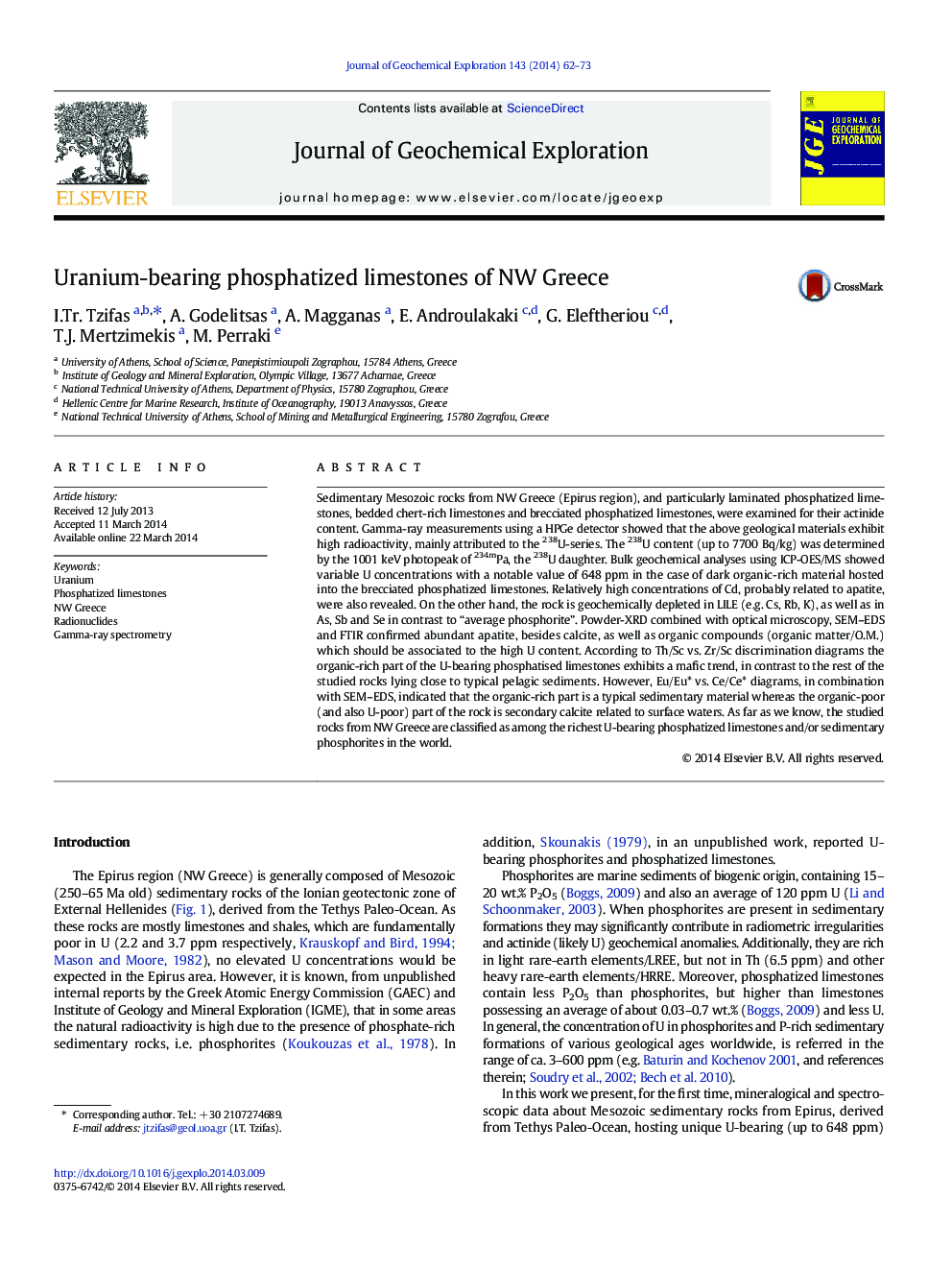| کد مقاله | کد نشریه | سال انتشار | مقاله انگلیسی | نسخه تمام متن |
|---|---|---|---|---|
| 4457352 | 1620914 | 2014 | 12 صفحه PDF | دانلود رایگان |
• Phosphatized limestones from NW Greece, show elevated radioactivity.
• Mineralogy and geochemistry of the above rocks is presented for the first time.
• We demonstrate one of the richest U-bearing phosphatized limestones in the world.
Sedimentary Mesozoic rocks from NW Greece (Epirus region), and particularly laminated phosphatized limestones, bedded chert-rich limestones and brecciated phosphatized limestones, were examined for their actinide content. Gamma-ray measurements using a HPGe detector showed that the above geological materials exhibit high radioactivity, mainly attributed to the 238U-series. The 238U content (up to 7700 Bq/kg) was determined by the 1001 keV photopeak of 234mPa, the 238U daughter. Bulk geochemical analyses using ICP-OES/MS showed variable U concentrations with a notable value of 648 ppm in the case of dark organic-rich material hosted into the brecciated phosphatized limestones. Relatively high concentrations of Cd, probably related to apatite, were also revealed. On the other hand, the rock is geochemically depleted in LILE (e.g. Cs, Rb, K), as well as in As, Sb and Se in contrast to “average phosphorite”. Powder-XRD combined with optical microscopy, SEM–EDS and FTIR confirmed abundant apatite, besides calcite, as well as organic compounds (organic matter/O.M.) which should be associated to the high U content. According to Th/Sc vs. Zr/Sc discrimination diagrams the organic-rich part of the U-bearing phosphatised limestones exhibits a mafic trend, in contrast to the rest of the studied rocks lying close to typical pelagic sediments. However, Eu/Eu* vs. Ce/Ce* diagrams, in combination with SEM–EDS, indicated that the organic-rich part is a typical sedimentary material whereas the organic-poor (and also U-poor) part of the rock is secondary calcite related to surface waters. As far as we know, the studied rocks from NW Greece are classified as among the richest U-bearing phosphatized limestones and/or sedimentary phosphorites in the world.
Figure optionsDownload as PowerPoint slide
Journal: Journal of Geochemical Exploration - Volume 143, August 2014, Pages 62–73
